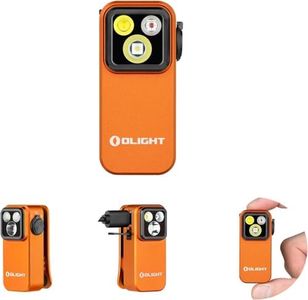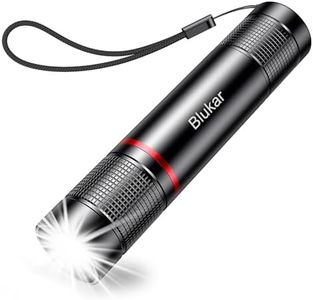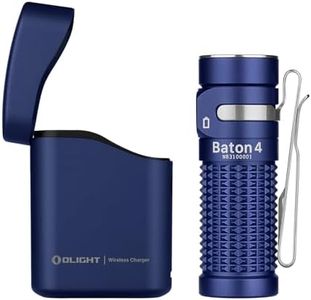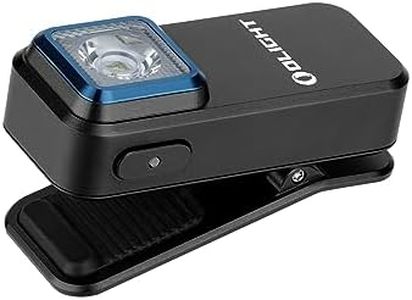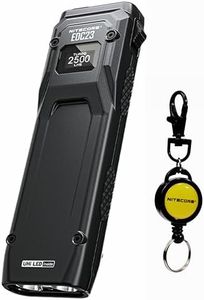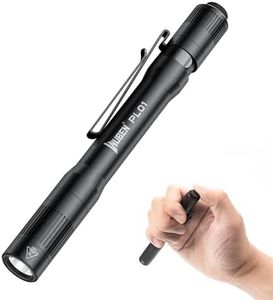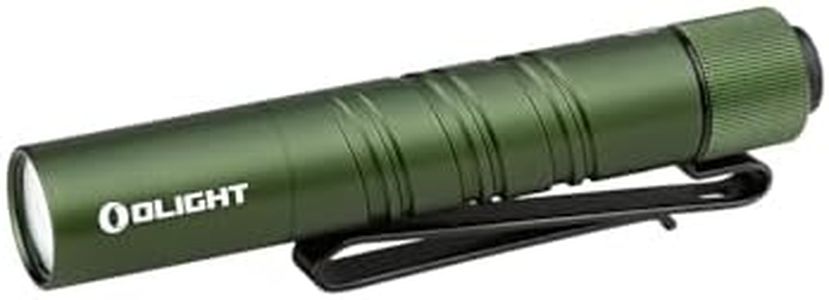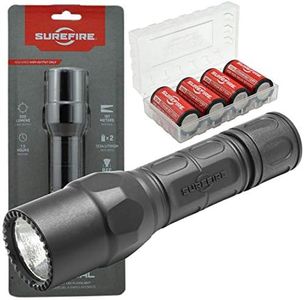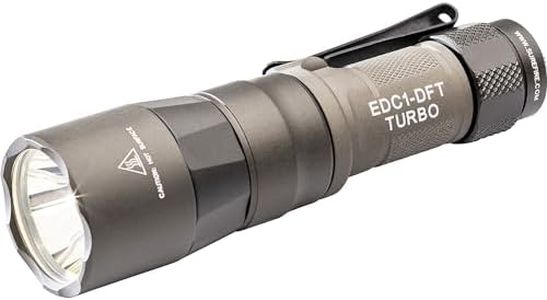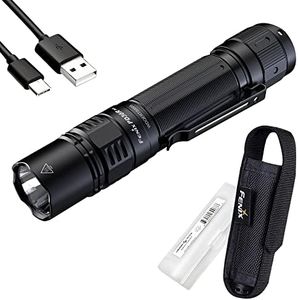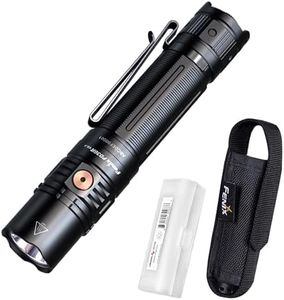We Use CookiesWe use cookies to enhance the security, performance,
functionality and for analytical and promotional activities. By continuing to browse this site you
are agreeing to our privacy policy
10 Best Pocket Flashlights
From leading brands and best sellers available on the web.Buying Guide for the Best Pocket Flashlights
Pocket flashlights are incredibly handy tools, whether you use them for outdoor adventures, household repairs, or simply finding your way in the dark. Because these lights come in a variety of shapes and sizes, it’s important to think about how and where you plan to use the flashlight. Consider factors like ease of carrying, brightness, battery life, and overall durability to ensure you get a flashlight that fits your lifestyle and needs.Brightness (Lumens)Brightness, measured in lumens, tells you how strong the flashlight’s light will be at its highest setting. Low-lumen flashlights (around 10-50 lumens) are good for basic tasks like reading a map or finding your keys. Middle-range (50-200 lumens) lights are versatile for both indoor use and dark outdoor settings. High-brightness (200 lumens and above) flashlights are powerful but may drain batteries faster and can sometimes feel too intense for close-up tasks. When choosing, think about your most common use: for occasional, close-up tasks, go for lower lumens; for outdoor or emergency use, opt for higher.
Size and WeightThe size and weight of a pocket flashlight determine how comfortable it will be to carry every day. Ultra-compact flashlights easily slip into a pocket or clip onto keys without being a burden, but may have fewer features. Medium-sized flashlights might be more comfortable to hold and offer better lighting, though they could be bulkier in your pocket. Heavier flashlights may be more durable but less convenient for everyday carry. Consider how and where you’ll carry the light: if you want it on you at all times, opt for something slim and light; if you don’t mind some extra weight for more power or durability, choose a medium size.
Battery TypePocket flashlights can use disposable batteries (like AA, AAA, or coin cells) or rechargeable batteries (via USB or built-in units). Disposable batteries are easy to replace and convenient if you aren’t near a charging source, but generate waste and can get costly. Rechargeable lights are great if you prefer saving on battery costs and always have a charging source available. Some flashlights even have solar options. Think about your access to power for charging and how long you want the light to last between charges to help you decide.
Build Quality and DurabilityBuild quality refers to how sturdy and resistant the flashlight is to drops, moisture, and other everyday hazards. Lights with metal bodies (like aluminum) tend to be tougher, while plastic ones are lighter but might not last as long. Waterproof or water-resistant ratings (often labeled as IPX ratings) matter if you’ll use the flashlight outdoors or in wet conditions. If you expect rough use, choose a model described as rugged and water-resistant; for casual, indoor use, less durability is usually fine.
Beam Type and RangePocket flashlights can have different beam types: a wide flood beam for nearby tasks, a focused spot beam for seeing far ahead, or adjustable focus for both. Flood beams light up a wide area, great for general tasks and walking at night. Spot beams are better for seeing long distances, like searching or outdoor navigation. Adjustable beams offer flexibility to switch between spot and flood. Think about where you’ll use your flashlight most often—close tasks need a flood, while distance viewing is better with a spot.
Ease of Use (Controls and Features)The way you turn the flashlight on and off, or change brightness levels, can impact everyday use. Simple single-mode flashlights are easiest for beginners or those who want quick access to light. Multi-mode flashlights offer low, medium, high, and even strobe or SOS settings for emergency use, but might be more complex to operate. Some models have side switches, tail switches, or twist controls. Choose a style you’ll feel comfortable using—if you prefer no-fuss, stick with simple controls; if you want options, look for multi-mode features.

